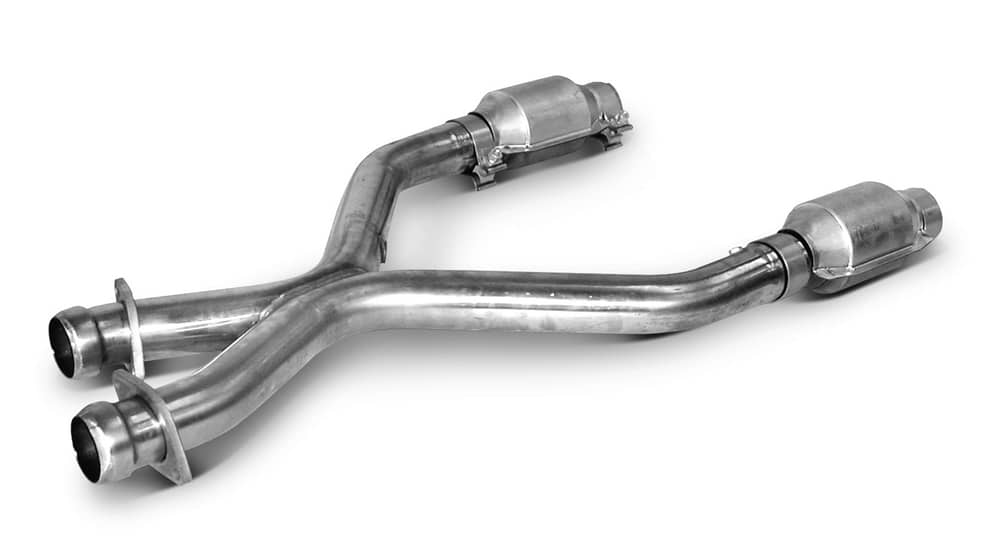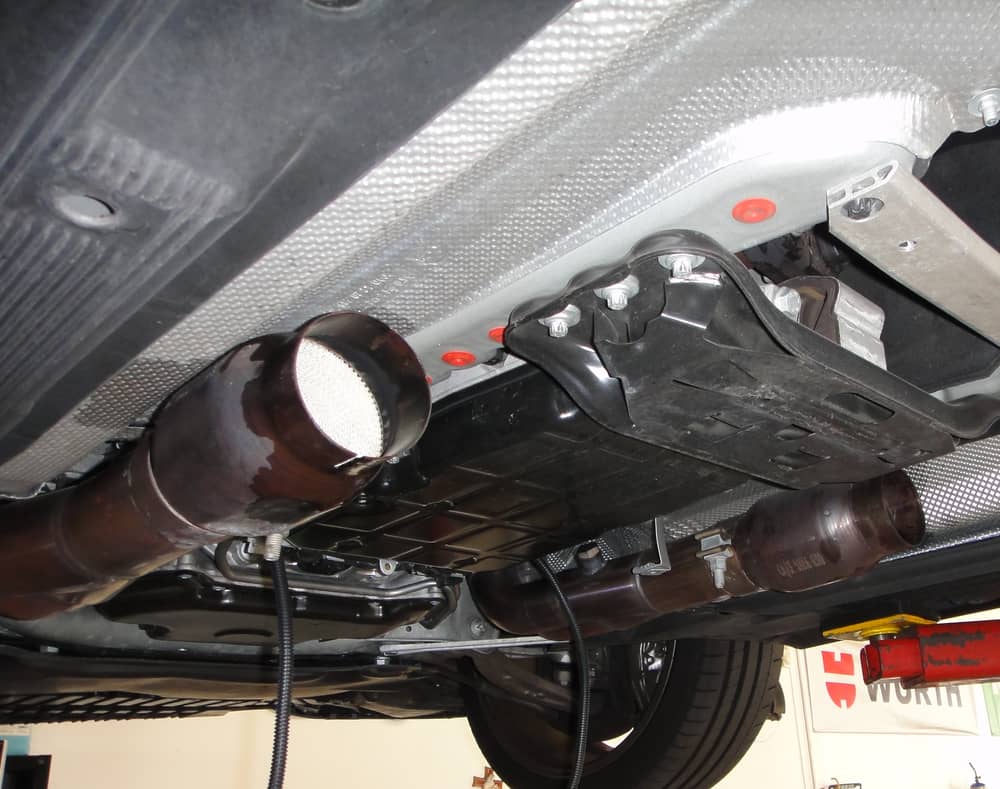Are high flow cats legal in California? Many people are curious about this. Because you are a car enthusiast, you should be aware of California law regarding vehicle modifications.
You’re undoubtedly already aware of adding an aftermarket, free-flowing intake, bigger headers, and an exhaust system with larger pipes to your automobile in order to increase horsepower.
High-flow cats are improved versions of common catalytic converters that filter exhaust gases. They maintain unrestricted airflow, guarantee that the exhaust is processed properly, and guard against improper fuel mixture. However because they are aftermarket goods and not CARB-compliant, they are typically not allowed in California.
But, for the optimum results, if you intend to add high-flow cats, you must also overhaul the entire exhaust system. We now talk about California’s laws on high-flow cats.
What Does A Catalytic Converter Do?

There are catalytic converters in every car; in fact, many newer cars and SUVs have more than one. The catalytic converter, which is a component of the exhaust system of the vehicle, is normally situated between the exhaust system and the exhaust manifold.
The fact that your car’s catalytic converter controls hazardous emissions and is a component of the emission control system means that it is crucial.
The process is straightforward and happens as exhaust gases pass through the manifold after leaving the engine. In order to be released into the environment safely, exhaust fumes must first be converted by the catalytic converter.
Chemical and mechanical mechanisms are used in the combustion process that powers automobiles. The piston and exhaust structure produce some compounds during combustion.
Several coatings cover the honeycomb structure of the catalytic converter. Ceramic honeycomb structures with precious metals are used by stock cats.
Each of these metals contributes significantly to the purification and reduction of emissions. Rhodium, platinum, and palladium are the metals.
As the exhaust fumes run through the building and react as it moves from one stage to another, these enable it to change the chemicals.
The vapors are clean and free of any compounds that can pollute the environment or generate pollution by the time they escape. In light of this, the converter is crucial to the exhaust system.
The computerized engine system can be reached through the cat. To make sure the fumes are safe, oxygen sensors constantly check the fuel mixture.
Carbon dioxide, nitrogen gas, and water vapor are the typical three primary emissions from car engines. Nitrogen oxides, hydrocarbons, and other minor yet dangerous pollutants are handled by the catalytic converter.
What Are High Flow Cats?
Exhaust gases flow more quickly through a high-flow catalytic converter because it has fewer constraints than a standard catalytic converter. All performance improvements are made possible by this redesigned exhaust system, which also improves the flow of exhaust gases.
Other exhaust system modifications are helpful because a vehicle’s factory exhaust system is frequently too constrictive for this.
The honeycomb architecture is still used in high-flow catalytic converters, but their construction is more intricate. There are more gases able to pass through the honeycomb because of its bigger cross-section.
Moreover, the “high flow cat” contains more metals throughout to catalyze the early exhaust gasses more quickly. It effectively raises the efficiency of the exhaust system, which raises the efficiency of the vehicle.
When modifying an exhaust system, it’s advisable to add a high flow catalytic converter as the last step, which is a vital consideration.
The converter will increase exhaust flow, but its performance is best when it works in tandem with other car modifications. The full power of a high-flow catalytic converter can be limited by the stock exhaust system.
In reality, a car that has been turbocharged or supercharged benefits greatly from a high-flow catalytic converter.
Your automobile should be capable of producing 20% more horsepower than its factory setting prior to installing a high-flow cat. Many of these changes are much simpler than you might think, especially with expert assistance.
Are High Flow Cats Legal In California?

In California, high-flow cats are prohibited. This is due to the fact that they lack a CARB number from the California Air Resources Board. If you intend to change any part of your car in California, you’ll need a CARB sticker or straight OEM replacement components.
Very likely, the high-flow cat will not pass visual inspection. A device for regulating emissions is the catalytic converter. By transforming the harmful pollutants from the internal combustion engine into innocuous substances, it will lessen their poisonous emissions.
For California Emissions Certified vehicles starting with the 2001 model year, the replacement converter you use must be CARB compliant.
It is also permitted in vehicles manufactured in 2000 or before that satisfy the Federal/exclusive EPA’s emissions standards. High-flow cats don’t filter as many pollutants as standard cats do, though. This implies that the check engine light will turn on as a result of the O2 sensors detecting it. It’s hard to pass the smog test without the right cat.
The sale, promotion, or installation of any device that modifies the functionality or appearance of any system or device for reducing vehicle pollution is prohibited by California Vehicle Code sections 27156.
The efficiency of the pollution control system or device won’t be affected by some aftermarket equipment exemptions. Hence, the high-flow cats might be acceptable if it’s possible for them to meet the car emissions regulations without going over.
Is a High Flow Catalytic Converter Right for You?
A high-flow catalytic converter is what you need if you’re seeking for the finishing touch to your exhaust system’s performance. This converter is something to keep in mind if you’re planning a complete overhaul of your exhaust system. A high-flow catalytic converter should be included even if you are replacing an old, standard catalytic converter.
The catalytic converter is a critical component of your car’s exhaust system, which is unquestionably one of its most important components. Your car will benefit greatly from a catalytic converter that is more up to date and has a better flow.
Particularly if you take the time and effort to have your entire exhaust system adjusted, this is true. It seems, a high flow catalytic converter will do more than just improve your automobile knowledge—it will also stop improper fuel mixture, increase airflow, and more. And maybe more importantly, breaking Californian law will result in a fine.
Do High-Flow Catalytic Converters Increase Horsepower?
Your car’s high-flow catalytic converter can increase horsepower since it increases overall exhaust flow. It is typically advised to use it as the last component of your exhaust system.
If your car has been significantly modified, such as with a turbocharger or supercharger, adding a high-flow catalytic converter is perfect. Because adding more power may be aided by the increased air flow.
Nevertheless, if the rest of your automobile is stock, adding a high-flow catalytic converter might not make much of a difference. Since the factory-installed exhaust system on your automobile is designed to manage the initial power output.
Despite its limitations, the stock catalytic converter is still present for a good reason. It is done to promote environmental cleanliness. Thus, before making any changes to your car’s emission system, especially those that include the catalytic converter, be sure to verify with your local emission rules.
Final Thoughts
Are high flow cats legal in California? The answer is NO. Consider using a high-flow cat if you wish to replace the outdated converter, adjust your exhaust system, or boost the performance of your car. However, you must be sure that the high-flow cat will pass California’s inspections and tests. If you have any questions about this issue, put your comment in the box below.
